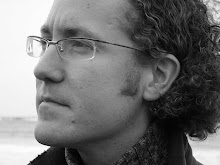Kevin B. Lee (@alsolifelike) posted a video essay for Sight & Sound on the evolution of Paul Thomas Anderson's steadicam work which discusses my eyetracking work on There Will Be Blood and the DIEM project here. You can view the video here:
http://www.youtube.com/watch?v=3GGI5mVH6pg&feature=player_embedded
The video essay discusses the careful use of staging and choreography to introduce the viewer to spaces and characters critical to several of Anderson's films including Hard Eight and Boogie Nights. The use of steadicam in all of these sequences varies from the bravura long and complex sequences of Boogie Nights and Magnolia to subtle uses in There Will be Blood and Punchdrunk Love. This analysis reveals the many ways in which steadicam can create affinity or conflict between what the viewer wants to see and how the camera moves relative to the characters in the scene. This affinity was clearly demonstrated in my analysis of the eye movement behaviour during the table-top sequence of There Will be Blood (as posted on David Bordwell's blog here). By choreographing the camera moves to natural attentional cues such as dialogue switches, character movements and the introduction of characters in from the side of the frame the filmmaker can make a reliable prediction about where most viewers are likely to be attending.
As discussed in the video essay, eyetracking film viewers gives us a direct line to the viewer experience of a film and can be used to validate filmmaker intentions for such sequences. It also provides us with ways to test hypotheses about how production decisions can influence the resulting viewer experience. With the decreasing cost of steadicam equipment and digital production in general the use of such techniques is becoming more and more common. But what this video essay, and my eyetracking research shows is that such sequences will result in viewer disorientation and confusion unless they are carefully designed with viewer sequential attention in mind. For example, our recent paper in Journal of Vision (http://www.journalofvision.org/content/12/13/3.full) shows how viewer attention can be altered for the same sequence of close-up shots just by excluding audio. I have recently reviewed the influence of such factors and compositional decisions in general in a journal article and book chapter:
Smith, T. J. (in press) Watching you watch movies: Using eye tracking to inform cognitive film theory. In A. P. Shimamura (Ed.),Psychocinematics: Exploring Cognition at the Movies. New York: Oxford University Press.
Smith, T. J. (2012) The Attentional Theory of Cinematic Continuity, Projections: The Journal for Movies and the Mind. 6(1), 1-27. (pdf)
There have been very few empirical studies looking specifically at the influence of steadicam shots on gaze behaviour but one recent study by Wang and colleagues (http://www.journalofvision.org/content/12/1/16.full) showed how powerful such shots could be for creating similarity in gaze across viewers. Using long steadicam clips from Russian Ark and Children of Men, the authors showed that introducing cuts and scrambling the order of frames within the steadicam sequences disrupted gaze behaviour but the control of each shot over viewer attention was so strong that viewers were able to very quickly reorient to the disordered sequences and re-attend to the centre of interest. This study shows that by using a carefully choreographed steadicam shot, the director can give the viewer the illusion of freedom to roam a continuous shot whilst actually constraining where they look when, creating continuity of attention within the frame and across viewers.
Tuesday, December 11, 2012
Subscribe to:
Post Comments (Atom)




No comments:
Post a Comment